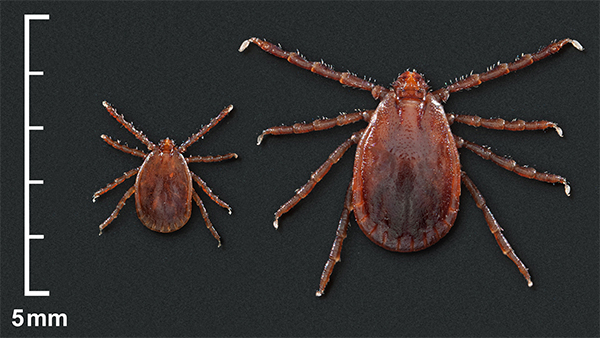While the world is still fighting against the novel Coronavirus pandemic, which first appeared in China's Wuhan and then spread across the globe, Chinese media reported about another virus, which has already killed seven people.
Local media reported that as of Wednesday, August 5, a new infectious disease caused by a tick-borne virus has infected at least 60 people in China and warned about the possibility of its human-to-human transmission.
In East China's Jiangsu Province, over 37 people contracted the SFTS virus in the first half of the year and later, 23 individuals in East China's Anhui province were found to have been infected.
The New Virus Infection

SFTS virus or Severe Fever with Thrombocytopenia Syndrome Virus, also known as 'Huaiyangshan banyangvirus', was first identified in China in 2010 and later, found in Japan and Korea. The tick-born virus appears to be more related to the Uukuniemi virus serogroup than to the Sandfly fever group. Human SFTS infections have a high case fatality rate, which was initially 30 percent though currently, as per China Information System for Disease Control and Prevention, the fatality rate is hovering between 10 and 16 percent.
Recent reports revealed that a woman from Nanjing, the capital of Jiangsu, had contracted the SFTS virus infection and showed symptoms such as fever and coughing. After medical check-up, doctors noticed a decline of leukocyte or white blood cells. After several months of treatment in a hospital, she recovered from the illness and discharged.
But the report revealed that in Anhui and East China's Zhejiang province the virus infection has already killed at least seven people. Virologists believe that it may have likely come from ticks to humans and can be transmitted among humans, the way coronavirus is spreading rapidly all over the world.
A doctor from the first affiliated hospital under Zhejiang University, Sheng Jifang said that the possibility of human-to-human transmission cannot be ignored as those already infected may pass it on to others through blood or mucous.

This virus can be transmitted to humans by Haemaphysalis longicornis, a member of the Ixodidae family, and has a wide variety of hosts including livestock, birds, wild and domestic mammals, mostly in Asia-Pacific region.
In humans, the symptoms associated with SFTS Virus infection include high fever, nausea, myalgia, abdominal pain, a dramatic reduction of platelets and leukocytes, raised serum enzyme levels, and, in some cases, multi-organ failure.









